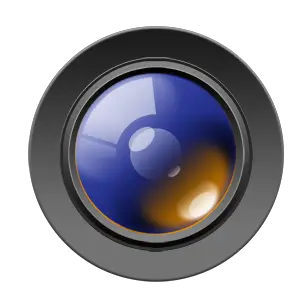Histograms
Histograms in digital photography look more complicated than they are. The left and right edges show you overexposure and underexposure and on this page you will find the necessary background knowledge.
What is a histogram?

A histogram is a graphical representation of a distribution of numerical data. In digital photography it shows how often which levels of brightness occur in an image.
The darker points are represented on the left, the lighter ones on the right, with pure black on the very left and pure white on the very right.
A curve running high up means that there are many pixels of the corresponding brightness; the lower it is, the fewer.
If a histogram stretches across the entire width and slopes towards the left and right edges, as in the example graphic, the image uses the entire brightness range from black to white, i.e. has high image contrasts and yet all parts of the image are recognisable, still showing details.

As an example, a photo with very simple content - almost no colours, only two large areas with the dark sea and the lighter clouds. The histogram is shown at the top left, click to open the image in large size.
The histogram
- starts on the far left, that comes from the darkest parts of the water
- shows two mountains, one further to the left for the darker water, one further to the right for the lighter sky
- ends before the right edge, because the lightest parts of the clouds are light grey, not yet white.

Now the same subject again, taken seconds later with a brighter exposure.
- The overall shape of the histogram has moved to the right because the photo is brighter.
- It reaches almost to the edge on the right because the brightest parts of the clouds are now almost white.
Simple and RGB histograms


Simple histograms summarise the red, green and blue values for each pixel of into a combined brightness or luminance, as in the first two examples. Here is another with plenty of colour in the image.
RGB histograms show the brightness distribution of the three primary colours red, green and blue separately. The sunset shows a red curve further to the right because the red component in the image is much brighter than green and blue. Look at the image in large to see the red peak in the histogram on the very right. It shows that in one part of the image red has reached maximum brightness, it is coming from the sun in the image.
It is normal for histograms to have very irregular shapes and in practice it is not necessary at all to study them closely and guess which part of the graph is coming from where.
What is important is to be able to read it in order to
- to be able to judge the tonal range of the photo as a whole and
- to recognise overexposures and underexposures.
Exposure control with histograms

Overexposures appear in a histogram as peaks at the very right edge. I add an example where it is very clear to see, the view outside from a decaying building was in the bright sun and is grossly overexposed; the simple histogram shows a clear peak on the right.
In the simple histogram, these peaks mean that parts of the image appear as pure, contourless white.
In the RGB histogram they mean that in parts of the image one or more colour components have reached their maximum value. Even when a colour component reaches its maximum, colour tones begin to look paler and image details may already be lost.
You can reliably check whether parts of the picture are overexposed only by looking at the RGB histogram. Check all three colour components red, green, blue for peaks at the right edge.
Overexposure of single colour components cannot be detected in the simple histogram. Compare the photo of the sunset again; in the simple histogram only a tiny peak can be seen on the far right; the RGB histogram shows the overexposed sun more clearly.


Underexposured areas appears in the histogram as a high peak at the left edge.
Unlike overexposures, underexposures can also be problematic before dark areas sink completely into black, i.e. when a steep mountain forms at the left edge, not just a needle tip at the very edge.
In the example photo you see such a mountain on the left side, the whole foreground contains very low contrasts so that it can hardly be recognised. In the second, brighter picture, the mountain has moved a little to the right, in this brightness range the foreground is clearly more recognisable.


